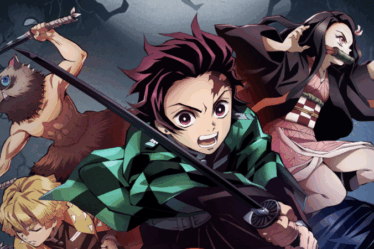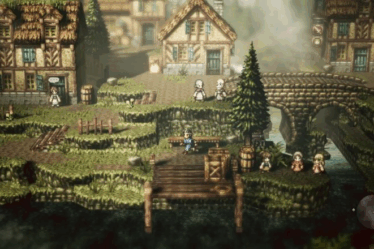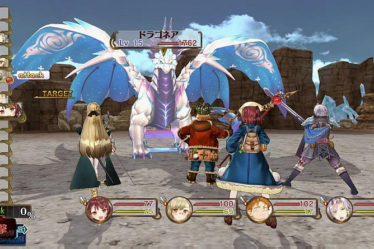
This article was originally published in Italian on GeekGamer.it in 2018.
Let’s not beat around the bush: Final Fantasy XV Windows Edition has the thankless task of bringing the entire Final Fantasy XV package, which landed about a year ago on PlayStation 4 and Xbox One, to PC, bolstered by a renewed number of contents crammed in through free updates and all the paid DLC previously released.
What doesn’t change compared to the console versions, alas, is the overall quality of the title in question, capable of making you fall in love thanks to its colossal production values as much as it can disappoint due to more or less significant oversights, both from a narrative and a more purely gameplay-related standpoint. In case you haven’t the faintest idea what I’m talking about, it’s fair to offer a quick recap of this project’s troubled development, born about ten years ago under the name Final Fantasy XIII Versus. Initially conceived by Tetsuya Nomura – the mind behind the Kingdom Hearts series and character designer for the Final Fantasy series from the seventh installment onwards – after years of development, the project was rebranded as Final Fantasy XV. Thus, the initial concept was abandoned, which intended it to be part of the Fabula Nova Crystallis, the trilogy of titles sharing the “XIII” in their name that was supposed to narrate three scenarios set in the same universe.
So, moving away from the dreamlike atmospheres steeped in the typically “Nomurian” teen angst of Final Fantasy XIII Versus, the team saw the arrival of Hajime Tabata in the role of Director, while the Final Fantasy series character designer was forced to give up his grand project to return to work on the third chapter of the Kingdom Hearts saga. What Square Enix accomplished, through “Tabata the fixer,” was fundamentally to build a title starting from a pre-existing imaginary, connecting previously created elements and trying to summarize – and modify – into a single storyline the events that Nomura would have wanted to tell in a trilogy dedicated to the princely protagonist. Clearly, some traces of “how Final Fantasy XV was supposed to be” can be found in previously published promotional material, but at the dawn of 2018, it’s right to draw a line under it: Final Fantasy XIII Versus is dead, it was a dying project and was consequently canceled.
The numerous free updates and paid DLCs desired by the team to expand the universe of Eos are clearly included in the package, also to justify its full price given the product’s late release on PC; these additional scenarios, accessible from the title screen and not inserted into the continuity of the main story, try to “patch up” the most critical points of the story. Indeed, the additional information they reveal sheds more light on some initially unconvincing aspects, but it’s fair to emphasize that we are decidedly far from the level of storytelling one would expect from a high-budget product bearing the label that in the 90s gave birth to Final Fantasy VII or Xenogears. In the case of Episode Gladio, it all boils down to a very linear “pseudo-action” spin-off dedicated to the muscular hero who gives it its name, useful for inserting a fight with Gilgamesh, a historic enemy of the Final Fantasy saga.
Episode Prompto and Ignis try to offer something more: the first must “clarify” one of the most controversial aspects of the original script, and to do so, it peppers the exploration of long metal corridors with audio files that throw the backstory in the players’ faces. This is a truly inelegant choice in terms of storytelling technique, but given the extent of the previously “appreciated” plot hole, it was practically impossible to do otherwise without modifying the entire duration of the main adventure. Ignis, on the other hand, offers exploratory gameplay of the city of Altissia and introduces a grappling hook suitable for moving smoothly across the rooftops of the Venice-inspired city: this scenario includes not only an important clash with a character previously criticized for having too little “screen time,” but also the opportunity to unlock a “phantom” alternative ending which, in its bleak naivety, is almost more credible than the real one. All these episodes allow access to an alternative costume and a special weapon, and if desired, it is possible to explore them again, although the experience exhausts its minimal charm on the first playthrough.
With the inclusion of the multiplayer mode – which, among other things, sees the return of some characters from the movie Kingsglaive: Final Fantasy XV –, Final Fantasy XV Windows Edition is comparable to the “Royal Edition” re-release offered on Xbox One and PS4; however, it is fair to remember that its purchase does not equate to owning a copy of the original game and its Season Pass, but also includes several new features sold separately on consoles (a paid update, just for good measure).
The most important is undoubtedly the expansion of one of the final chapters of the game, previously criticized for being presented in a summary manner and absolutely devoid of pathos. Worth noting, in this sense, is the inclusion of a long cinematic sequence that certainly has the merit of enriching the spectacularity of the final stages, but which is unjustifiable from a narrative point of view. Among the other new features, we then find new unique enemies, a new combat technique for Noctis, and the possibility of driving the royal Yacht in the sea that separates the city of Altissia from the continent. Needless to say, these additional contents, although welcome, do not shine for quality and, like tightrope walkers, live on highs (few, and mostly aesthetic) and lows (many, and almost all functional), thus representing an insignificant addition when looking at the project in its entirety. In short, those who were disappointed and burned by the title in its “vanilla” version will certainly not change their minds now that the banquet has been enriched.
As for gameplay, Final Fantasy XV is a JRPG that borrows several gameplay conventions from Western exploratory titles, allowing in the first part to wander far and wide through a rather extensive region (that smells of Open World), both on foot and aboard vehicles. This re-release obviously allows you to try out several new features in this regard, including the ability to move with an off-road vehicle and speed across the sea aboard a yacht. In both cases, the benefits are mostly aesthetic, but at least now it’s possible to accept more than one hunt mission at a time, the only secondary activity that goes beyond tracking down objects and returning them to silent NPCs or following on-screen indicators, as if you were playing an MMO or any Ubisoft title.
The battle system remains practically unchanged even after a year, which is a problem. Final Fantasy XV might resemble an action title, but it’s clear that the development team’s efforts were focused on trying to create a series of mechanics that would be familiar to long-time fans. So what at first glance might seem like a frantic action game along the lines of Devil May Cry et similia, instead configures itself as a shaky Action RPG where most of the moves can be performed by holding down the attack button, modifying the animations simply by acting on the left analog stick those rare times when it will actually be necessary; paying close attention, you can also hit the on-screen prompts in pure quick-time event style that warn of the possibility of defending or counterattacking, but considering the practically non-existent level of challenge, these will only be useful on rare occasions and obviously only in the advanced stages. After a year, it is possible – once the ability is activated in the dedicated skill tree – to take control of the companions, but since there are no specific areas in the main campaign designed for them, the effort is once again considerable little more than a “welcome gift,” but certainly not necessary.
As I was saying, the battle system of Final Fantasy XV proves to be quite problematic due to its almost total lack of depth, apart from a few rare occasions. Sure, moving far and wide holding down a button to see a scene worthy of a frantic animated film like Final Fantasy VII: Advent Children – also by Square Enix – compose itself on screen is certainly galvanizing, but the entire strategic component typical of the JRPG genre is unfortunately sacrificed on the altar of a crackling (and sometimes disheartening) spectacularization. Precisely this excessive love for staging has meant that the challenge level of the game in question has dropped to the point of having to make an effort to find out what happens when you actually encounter the game over screen. Let’s now talk about the unresolved problems of this great design machine: most of the automatisms that move the logic of the battles and the animations of the characters during the most spectacular techniques encounter a direction that is often too close-up and unable to manage in cramped environments or in areas rich in vegetation. It is not uncommon to find yourself challenging monstrous enemies with foliage in the foreground, or to see the animations – objectively among the best I have ever seen in a Japanese video game product of this magnitude – create several problems due to their duration, including the teleportation of characters on the battlefield or episodes in which the heroes move like real incorporeal “ghosts” despite being hit by enemies. This does not mean that the combat system of Final Fantasy XV cannot be appreciated or be fun – and, indeed, in a certain way it is perhaps the most enjoyable aspect of the production since it continuously gratifies whoever has the joypad in hand and gives the sensation of fully controlling the pirouettes and evolutions of the protagonists. Final Fantasy XV is spectacle, pure and simple crackling of colorful fireworks in which strategic planning and the downtime of turn-based clashes are just a memory. Accepting it is difficult, but it is necessary to be able to appreciate what little of real value is hidden under the hood of the Square Enix speedster.
The limits of the combat system are especially noticeable, paradoxically, in the three episodes dedicated to Noctis’s companions. In these, the development team tried to diversify the approach to clashes and the mechanics that move them with not always convincing results. Episode Gladiolus is a continuous struggle of slashes where the numerous crowded situations leave room for less than flattering comments on the responsiveness of the controls and the management of animations and virtual direction; Episode Prompto proposes bizarre on-rails stealth sessions and, later, aiming as in any TPS against opponents who do not suffer the recoil of firearms or who fly and teleport from one point of the map to another, and this activity alone seems to me to be traceable in the dictionary as the opposite of the word “fun”; Episode Ignis at least has the merit of including an extra clash that is among the toughest in the entire package, but here too automatisms reign supreme. Although the game warns that all episodes dedicated to the companions should be played after the main adventure, only the last one presents heavy spoilers and is therefore advisable only for those who want to discover a tasty backstory once the story is completed.
Finally, a comment on the technical aspect of the game, which on PC finally manages to free itself from the chronic heaviness of PlayStation 4 and Xbox One. Square Enix collaborated with NVIDIA to ensure the “master race” users a re-edition capable of achieving what on console was only a dream. Support for the latest audio technologies, video resolutions with full support for the most disparate aspect ratios and ultra HD, while the unlocked frame rate screams vengeance at Xbox One X and PlayStation 4 Pro: Final Fantasy XV Windows Edition is in every way the best way to enjoy this technical benchmark made in Japan, if you have a joypad (side note: my Razer BlackWidow Chroma V2 also lights up following what happens on screen). Clearly, it is necessary to have a mid-to-high-end PC (benchmark here) and more than 100GB of disk space for HD assets to be able to test the quality of 4K assisted by a frame rate that doesn’t completely abandon us in the most hectic phases, but in general, the technological leap compared to the console counterparts is noticeable even remaining at the more “basic” FULL HD resolutions.
The world of Eos is finally fleshed out with NPCs that adorn its splendid scenography, while the vegetation pop-up typical of its first console edition guise is totally forgotten and overshadowed by the splendor of a world kissed by HDR support and the absence of biblical loading times for every fast travel. The artistic effort of the Japanese company is finally testable in its maximum completeness, without any compromise. Precisely for this reason, if you were interested in going on a hunt in Eos ignoring Noctis’s shaky story, but delighting in the splendid soundtrack, here enriched with new tracks, this version of the game is the only one I feel I can recommend.
Easily scalable and customizable, Final Fantasy XV Windows Edition is probably Square Enix’s best PC port in recent years, perhaps also due to a conspicuous number of far from virtuous precedents. It is clear that Hajime Tabata and the Square Enix team are counting heavily on the title’s landing on the PC market, and the future of the Eos universe is not yet clear, although other DLCs have already been announced until 2019.
In conclusion of this analysis, it is fair to admit that Final Fantasy XV Windows Edition is probably what the fifteenth chapter should have been from launch… at least from a technical point of view. If it is true that the additional content represents a conspicuous addendum to the number of hours necessary to complete every task and conquer every trophy/achievement, it is also true that the entire work is still dominated today by a truly unforgivable gameplay sloppiness. What Pietro had told us in his previous review, in short, remains tragically current, with the aggravating circumstance that a year later and after a series of updates (paid and not), the situation has certainly not changed. Final Fantasy XV will remain in history as an ambitious project, tragically shipwrecked and then concluded by dint of patches and DLCs (which, on console, are not even included in the re-edition’s Blu-ray disc). I don’t know about you, but if I were an early adopter, I would think a little before jumping on a copy of Square Enix’s next AAA title directly on Day 1. Oh: on console, Season Pass owners have to pay an additional “tip” to enjoy some of the “Royal Edition” content. Fans will rejoice, but I remain rather perplexed.
Final Fantasy XV: Windows Edition is technically impressive, finally delivering the game as it was meant to be seen—at least visually. Packed with all DLC and new features, it expands the experience, but can’t fully fix the core issues: shallow gameplay, weak storytelling, and a scattered narrative born from a troubled development. While longtime fans may enjoy the spectacle and improvements, others will still find it more style than substance. A definitive version of a flawed game—worth exploring on PC, but don’t expect a miracle.


